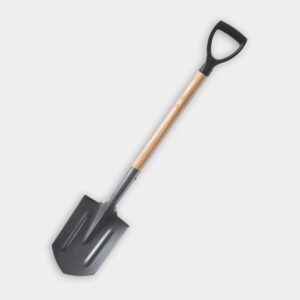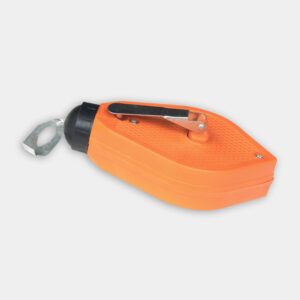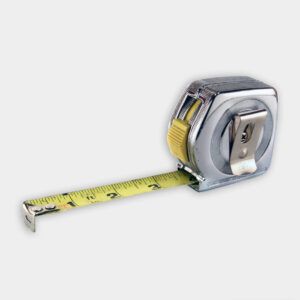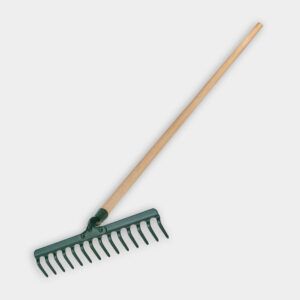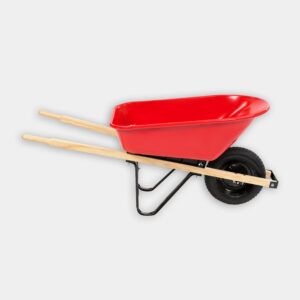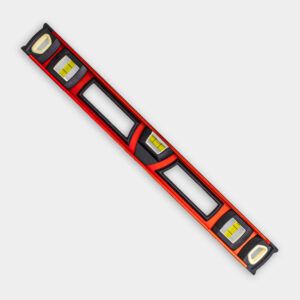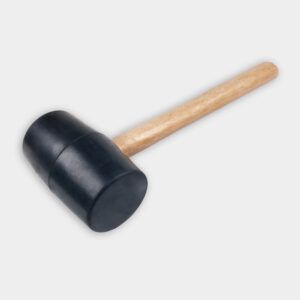Project details
Skill
Cost
Estimated Time
Building a retaining wall is an effective way to manage slopes in your landscape, prevent soil erosion, and create usable outdoor space. In the video above, This Old House landscape contractor Roger Cook demonstrates the process of building a concrete block retaining wall. Below, we’ll outline the steps and offer some tips for DIY enthusiasts looking to replicate this project.
Understanding Retaining Walls
Retaining walls are structures designed to hold back soil and create level areas in sloped landscapes. In the video, Cook and the homeowner create a retaining wall to serve as a landscaping bed. It’s a simple build that relies on gravity and a little bit of masonry adhesive to keep soil in. This type of retaining wall is largely aesthetic and well-suited for DIY construction.
However, retaining walls that must hold back an existing slope are under far more soil pressure. They require more complex drainage and potentially an anchored or cantilevered design to hold their shape and protect the area from runoff and erosion. Unless you have engineering knowledge, you should contact a professional landscaper about creating a functional retaining wall to protect your investment in your property.
Fortunately, a retaining wall like the one seen in the video can often be completed in a day, though make sure to carefully consider how much digging and heavy lifting you can do at once. We recommend having an assistant to share the work.
Planning Your Retaining Wall
Before beginning construction, plan your retaining wall carefully.
Assessing the Site
Start by evaluating the area where you intend to build the wall.
- Measure the length and height of the proposed wall and obtain any necessary permits.
- Determine the slope of the terrain.
- Identify any underground utilities (by calling 811 before you dig) or obstacles.
- Check HOA restrictions and local building codes.
- Plan for drainage, either with a layer of gravel or a drainage pipe.
Choosing Your Wall Material
Retaining walls may be made of wood, bricks, manufactured concrete blocks, or natural stone. For this project, Cook uses interlocking concrete blocks, which offer durability and ease of installation. The matching tongues and grooves help lock the stones into place without adhesive. This step-by-step guide applies only to similar concrete blocks, but other options are available.
Gathering Tools and Materials
To build a retaining wall, you’ll need the following tools.
- Caulk gun
- Garden rake
- Guillotine splitter (if necessary)
- Hand tamper
- Mason line
- Rubber mallet
- Shovel
- Stakes
- String/line level
- Tape measure
- Torpedo level
- Wheelbarrow
- Work gloves and dust mask
If your project requires cutting a rough edge into stone, you’ll likely need to rent the guillotine splitter from your local home center or stoneyard. If one isn’t available, you can accomplish the same result with a masonry chisel and hammer. A masonry saw or angle grinder with a masonry blade will produce too clean an edge.
You’ll also need these materials.
- Concrete blocks
- Concrete sealer
- Crushed stone
- Filter fabric
- Masonry adhesive
- Stone dust
Pro tip: Get about 10% more blocks than you think you’ll need. This will prevent extra trips to the store and also allow for mistakes or miscuts.
Step-by-Step Guide to Building a Retaining Wall
The first steps of the process require the most care and patience. If you take your time with preparation, leveling, and installing the first course of blocks, you’ll have a much easier time with the latter steps. You’ll also have a much more professional-looking finished product.
Step 1: Preparing the Site
- Dig into the ground about 2 feet back from the desired face of the retaining wall.
- Stretch a line, bearing a string level between wood stakes to establish the wall height.
- Measure down from the string to determine how deep you need to dig to bury an entire block so that the surface is at ground level.
- Add 6 inches to this measurement to accommodate a layer of crushed stone.
- Deepen the trench based on your measurements.
Pro tip: The first course of stone resting beneath ground level and the six inches of crushed stone are based on manufacturer recommendations. Check the instructions that come with your concrete blocks for specifics.
Step 2: Creating a Solid Foundation
- Add 6 inches of crushed stone to the trench.
- Rake the stone layer roughly level and compact it with a hand tamper.
- Put on your dust mask, then pread 2 inches of stone dust to create a smooth bed for the base course of blocks.
- Tamp the stone dust to ensure a firm, level surface.
Step 3: Installing the Base Course
- Set each base block, dropping it in place to minimize stone dust getting in between blocks. Tamp the block into the stone dust with a rubber mallet.
- Measure to ensure that the top surface of each block is the desired distance from the mason’s line.
- Level each block in two directions: front to back and side to side. Make any necessary adjustments using the mallet.
- Turn the level on its side to ensure that the front of each block is plumb (at a right angle) with the mason’s line. Once again, make adjustments with the mallet.
- Backfill the rest of the trench behind the base course with crushed stone for additional drainage.
Step 4: Building the Wall
- Set the blocks in the second course, ensuring the grooves fit over the tongues on the blocks below.
- Install filter fabric behind the wall to prevent soil from washing through. For now, weigh it down with additional blocks.
- Continue setting blocks, checking level and plumb as you go.
Step 5: Creating Corners and Caps
Cook’s block set came with special groove-free corner blocks and caps with a finished edge. Here are the steps he needed to install them, though your blocks may require a slightly different process.
- Install each groove-free corner block on top of two beads of masonry adhesive.
- Install the final course of regular blocks, which have a groove on the bottom but no tongue on the top. This should create a flat surface for the caps.
- Use a guillotine splitter to cut a rough edge on a cap block to create a corner cap.
- Set the corner cap with both rough edges exposed, allowing it to extend 1 inch over the wall to create a shadow line.
- Install the remaining cap blocks using masonry adhesive.
Finishing Touches
- If the blocks aren’t sealed, coat them with concrete sealer and allow to dry per manufacturer recommendations.
- Backfill the wall with more crushed stone for proper drainage.
- Fold down the filter fabric over the crushed stone, which will keep soil from seeping into the stone as water drains.
- Add soil topped with 6 inches of loam on top of the fabric for planting.
Pro tip: If you live in an area with lots of precipitation, you may need to install a french drain in the area behind the wall before you backfill it with crushed stone. Make sure the water drains an appropriate distance from the wall.
Maintenance and Care for a Retaining Wall
To ensure the longevity of your retaining wall, take the time to maintain it.
- Inspect the wall annually for signs of shifting or damage.
- Clear debris from drainage areas to prevent water buildup.
- Remove any vegetation growing in the joints between blocks.
- Reapply masonry sealer every few years to protect the blocks from moisture.
Common Retaining Wall Mistakes to Avoid
When building a retaining wall, be aware of these potential pitfalls:
- Inadequate base preparation
- Poor drainage provisions
- Sloppy block placement or leveling
- Neglecting to use filter fabric
- Overbuilding without proper engineering for tall walls
Avoiding these mistakes ensures a smoother construction process and a more stable, long-lasting wall.
